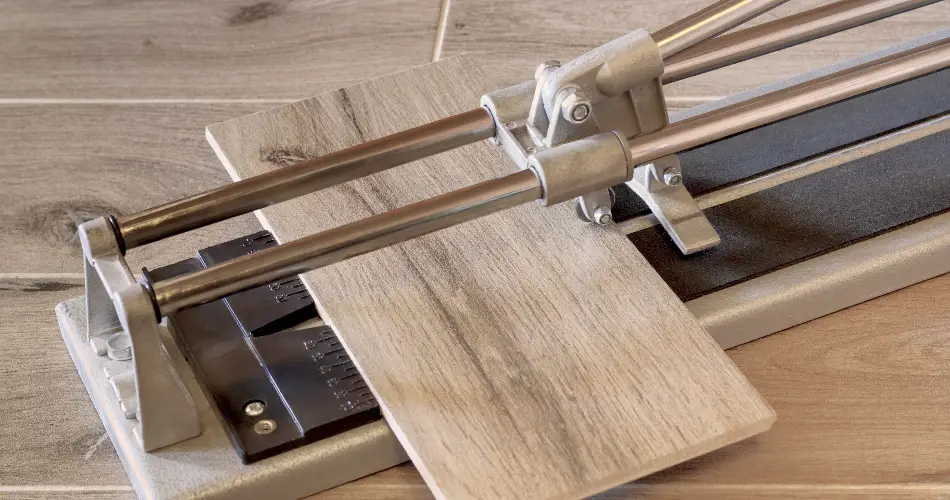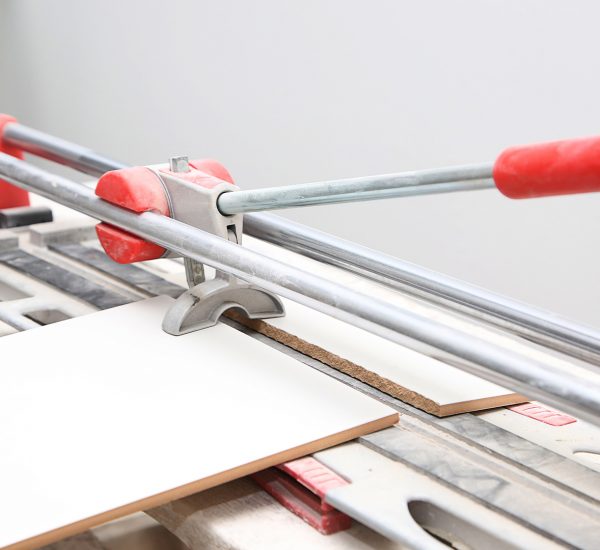If you’re considering the idea of introducing new tiles in your house and you wish to do all the tiling work by yourself is something you like, then you must know that you would need to cut tiles at some point.
The overall process is a little daunting, but if you’ve equipped with correct information and equipment, the skill is quite simple to learn and you can get the desired outcomes.
NOTE – While you are cutting, a little amount of risk for tile shards is always present – to be on the safe side, it’s best to equip yourself with safety goggles and gloves.
Being available in a variety of sizes and shapes you won’t get the approach of “one size fitting all”. The blades and other essential needed tools are based on the material and thickness of tile.
It’s best to use the right type of equipment for achieving paper and Finer looking cuts as these provide a highly professional and lavish appearance while minimizing the risks through a sharp or jagged edge.
1. Manual tile cutting machines
Manual style cutting is ideal to cut straight lines between the tiles. If the desired effect is brick bond or you have to minimize the size of tile to get a perfect corner fit, then you can select the manual cutter for perfectly executing the job.
Manual tile cutting tools are available with substitutable wheels, so a single cutter is ideal to cut through various tile material varieties and sizes. However, these are generally used with the ceramics.
TIP TO NOTE: Different wheel sizes with ideal tiles for the best outcomes.
- 6mm, Ceramic tiles for wall
- 8mm, Ceramic tiles for wall, floors and smooth porcelain
- 10mm, Ceramic tiles for floors
- 18mm, Structured and textured porcelain
- 2mm, Structured porcelain and hard textured porcelain and also porcelain, 20mm
Upon measuring and marking the tile must face upside in cutter while ensuring it is kept straight using guides. Now score from the tile’s bottom towards the top, while applying ideal pressure for going through glaze. Pull down the handle after scoring (again with relative pressure amount) for snapping tile along with score.
TIP TO NOTE: for intensifying the achieved cosmetic outcomes you can hide cut edge alongside the wall/trim/corner and get fine edge beside another tile.
2. Electric Tile Cutters
Electric tile cutting machines are essential power tools meant to cut stronger thicker and larger tiles. their most common use is to cut denser and stronger materials than ceramics such as porcelain.
These are also recommended if you require unusual and distinctive shaved cuts like around pedestal, basin, or a toilet. They are also used for cutting straight or beveled edges.
Similarly, to manual cutters, you can place measured and marked style parallel to the blade while slowly and safely feeding it beside the line. you need to wear personal protective equipment (preferably chain gloves) as tiles normally get raised due to blade movement. the cutter needs to be pressed down for ensuring smoother line. You need to be sure that the protective cover remains in place on the blade as well.
TIP TO NOTE: Things can get a little messy while working with these as they need constant water flow for controlling the blade temperature. It’s best to always use these outdoors.
3. Nippers and Scribes
Tiles scribes and Manual cutters have a similar working mechanism. You need to measure and then mark tile and instead of using manual cutting machine, you can try secure metal ruler to score along the line. Then you can snap tile on the Scribe’s backside. although the certain method is only ideal for ceramic tiles of smaller size like metros.
While using nippers, we can say that the efforts pay you well. Although, the approach is slow you can still get complex cuts after a little practice, which rarely matches with other methods with other different types of cutters. Our goal was to get controlled break, and in this particular case we’re getting numerous controlled breaks. Nippers are essential tools and are quite similar to the plier tools. These tools are specially designed to nip the tile edges while cutting out distinctive and unusual edges like a plug socket or door frame.
Just like other DIYs, tile cutting and carving is a skillful practice and requires some patience with the correct information that can bring you a step closer to your dream house.




